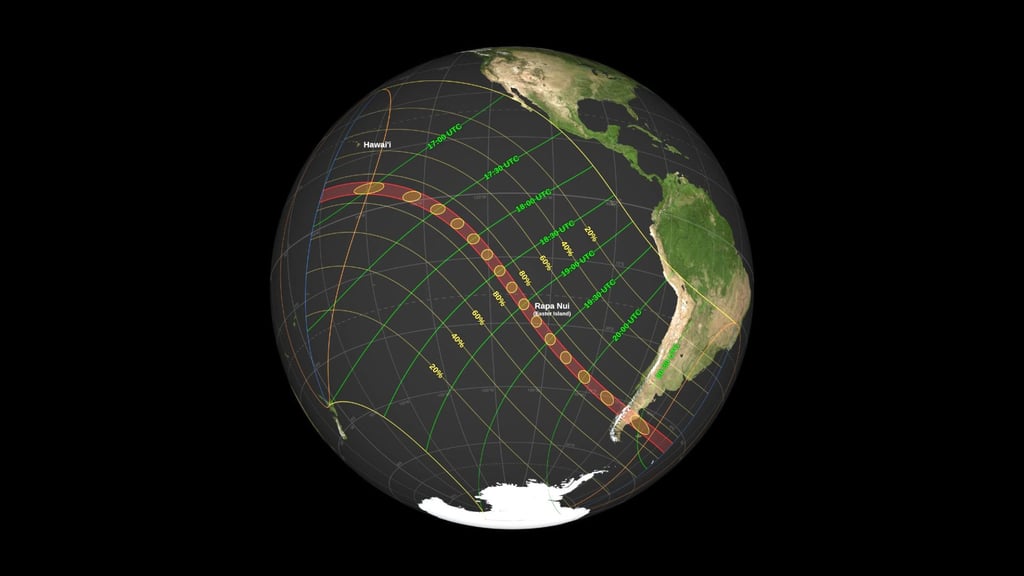Eclipse-chasing on Easter Island, amid the moai statues
An eclipse-chaser visited Rapa Nui to enjoy a mystical experience: the island’s first ‘ring of fire’ since 1788, viewed from among its mysterious stone heads

I didn’t expect to see its famous moai statues face down in the dirt. Nor did I think I would have to drive through a huge herd of cows to reach them. But the most surprising thing about my visit to Easter Island, known locally as Rapa Nui, was watching the moon do something extraordinary above this iconic location.
Remote, barren and almost treeless, Rapa Nui is on many a bucket list. On mine, there’s been a ring marked around it for years, not only for a particular date but even a specific time of day: 14:04 on October 2, 2024. That was when an annular solar eclipse – a “ring of fire” – would form above this island and almost nowhere else. For six minutes and 13 seconds, the moon would sit plumb against the sun’s centre.
It would be Rapa Nui’s first annular solar eclipse since 1788, and its last until 2345.

I’m an eclipse chaser, having seen a dozen solar eclipses in far-flung places, from the Southern Ocean off South Georgia and the remote Faroe Islands to Queensland, in Australia, and the Texas Hill Country, in the United States. I do it for the spine-tingling feeling of awe and to meet the many eclipse chasers I’ve become acquainted with over the years. Mainly, though, I do it for the travel. Travelling for its own sake can get tiring; travelling with a purpose never does.
All of which made a solar eclipse on Easter Island impossible to resist.
Some 1,900km from its “neighbouring” island, Pitcairn, and 3,500km west of Chile, this speck of just 163 sq km may seem an unlikely place for the moon’s shadow to fall. Here was the rarest of chances to experience two “otherworldly” experiences in one: the mysterious moai and an awe-inspiring eclipse.
It may be remote geographically, but Rapa Nui is easy to get to if you have patience. There is generally one flight daily to the island from Chile’s capital, Santiago, and LATAM Airlines can land a Boeing 787 at Rapa Nui’s Mataveri International Airport thanks to its runway being extended in 1987 by Nasa, which required somewhere in the Pacific Ocean to land its Space Shuttle in case of emergency. It has never been used for that purpose; instead, it allows more than 4,000 visitors each week to see some of the island’s 900 moai.